Espresso. The very word conjures images of rich, dark crema, the invigorating aroma, and the satisfying jolt of caffeine. But espresso is more than just a quick pick-me-up; it’s a craft, a science, and for many, a passion. This guide delves into the fascinating world of espresso, from the fundamentals of brewing to advanced techniques and troubleshooting, empowering you to create the perfect cup.
- Espresso 101: Defining the Basics
- Exploring Espresso Variations and Alternative Methods
- Essential Tools and Skills for the Aspiring Barista
- Mastering the Art of Espresso Extraction
- Troubleshooting Common Espresso Challenges
- The Allure and Considerations of Espresso
- Expert Recommendations for Espresso Excellence
- Beyond Espresso: Exploring Related Coffee Realms
- Conclusion: Embracing the Espresso Journey
- Unleash Your Inner Barista
Espresso 101: Defining the Basics
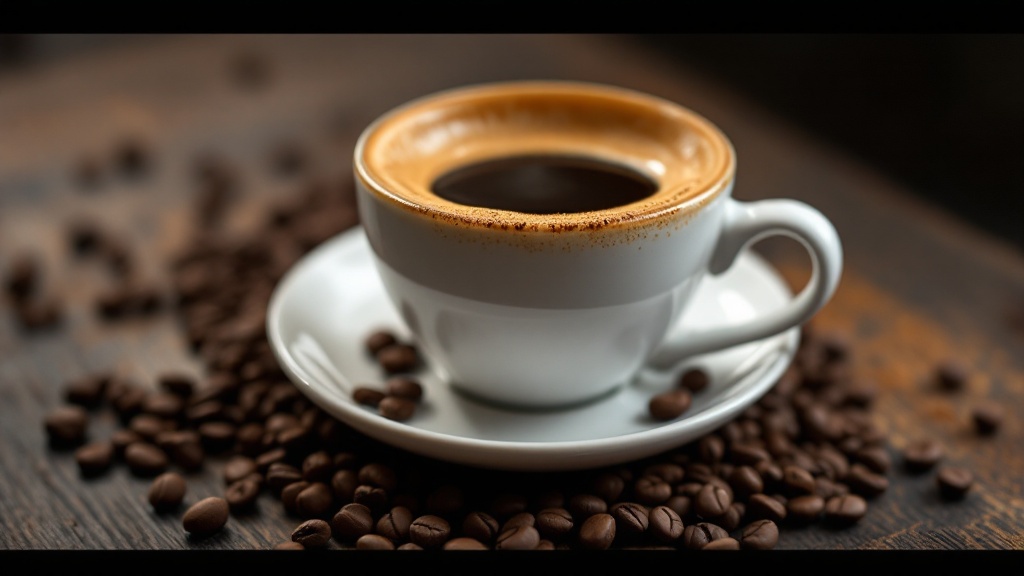
Espresso, at its core, is a concentrated coffee beverage brewed by forcing hot water through finely-ground coffee beans under high pressure. This high-pressure extraction, typically 9-10 bars, is what distinguishes espresso from other brewing methods. The result is a rich, complex flavor profile, a velvety texture, and a hallmark golden crema – a layer of emulsified oils and carbon dioxide that sits atop a perfectly pulled shot. Understanding the terminology is key: a single serving (around 1 oz) is called a “shot,” a double shot a “doppio,” a shorter, more concentrated shot a “ristretto,” and a longer shot a “lungo.” As James Hoffmann explains in his book *The World Atlas of Coffee*, the crema is a visual indicator of quality, hinting at the nuanced flavors waiting beneath.
“The crema is not just a visual delight; it’s a window into the quality and complexity of a perfectly extracted espresso.”
– James Hoffmann, Author of *The World Atlas of Coffee*
Beyond these basics, the world of espresso opens up to a wealth of variations. Single-origin espressos showcase the unique terroir of specific coffee-growing regions, while blended espressos artfully combine beans from different origins to create balanced flavor profiles. Decaf espresso offers the same rich experience without the caffeine, though the decaffeination process can subtly alter the flavor. Even the water you use plays a role, with filtered water being preferred to avoid mineral buildup and off-flavors in your machine.
Espresso Extraction Pressure
The pressure profile during espresso extraction significantly impacts the final beverage’s characteristics. Ideal extraction pressure is generally considered to be between 9 and 10 bars, though some variations exist depending on the specific coffee bean, grind size, and desired flavor profile. This pressure is achieved through a pump system within the espresso machine, forcing hot water through a compressed puck of finely-ground coffee within the portafilter. Maintaining consistent pressure throughout the extraction is crucial; fluctuations can result in uneven extraction, leading to sour or bitter notes in the espresso. Modern espresso machines often incorporate pressure gauges to monitor this vital parameter, allowing baristas to make adjustments as needed. For example, a drop in pressure during the extraction may indicate channeling – where water finds a path of least resistance through the coffee puck – resulting in a less-than-ideal extraction.
- Pre-infusion, a period of low pressure at the start, helps to evenly saturate the coffee grounds before the main extraction, preventing channeling.
- Over-extraction (pressure too high or extraction time too long) leads to bitter espresso due to excessive extraction of undesirable compounds.
- Under-extraction (pressure too low or extraction time too short) results in sour or acidic espresso due to insufficient extraction of desirable compounds.
- Different espresso machine types (e.g., lever, pump) can influence pressure profiles and require adjustments in grind size and dose.
- Pressure profiling, a technique involving deliberate pressure changes during extraction, is used by some baristas to fine-tune flavor.
| Key Aspect | Extraction Pressure | Flavor Impact | Extraction Time |
|---|---|---|---|
| Ideal Extraction | 9-10 bars | Rich, complex flavor | 25-30 seconds |
| Over-Extraction | Pressure too high | Bitter notes | Too long |
| Under-Extraction | Pressure too low | Sour or acidic | Too short |
Exploring Espresso Variations and Alternative Methods
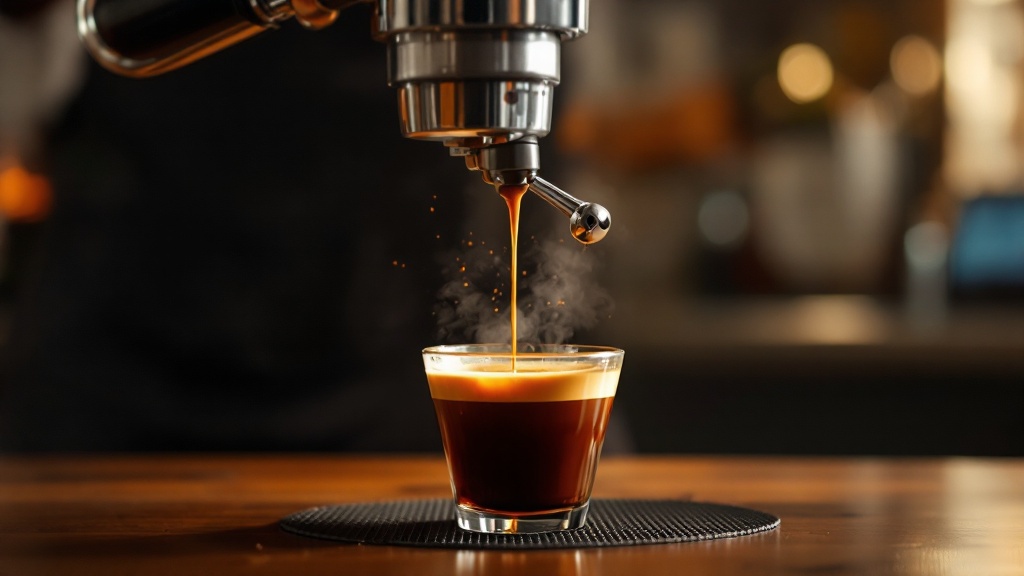
While traditional espresso made with a dedicated espresso machine remains the gold standard, several alternative methods offer a glimpse into the world of concentrated coffee. The Moka pot, a stovetop brewing device, produces a strong, espresso-like brew, but its lower brewing pressure doesn’t create true espresso. The AeroPress, known for its versatility, can mimic the concentration of espresso with a fine grind and short brew time. Nespresso machines offer convenience with their capsule-based system, but coffee purists often argue that the resulting brew lacks the depth and nuance of traditionally brewed espresso. Each method has its advantages and drawbacks, making it essential to understand the nuances of each.
“Mastering espresso is less about the method and more about understanding variables like grind size, pressure, and bean origin.”
– Scott Rao, Author of *The Professional Barista’s Handbook*
Beyond brewing methods, the type of beans used dramatically influences the final cup. Single-origin beans, sourced from a single farm or region, allow you to experience the distinct flavor characteristics of that specific terroir. Blended espressos, on the other hand, combine beans from various origins, allowing roasters to create complex and balanced flavor profiles. Experimenting with different roasts and origins is essential to discover your personal espresso preferences. As Scott Rao highlights in *The Professional Barista’s Handbook*, understanding the impact of variables like grind size and tamping pressure is crucial for achieving consistent and high-quality espresso, regardless of the method.
Espresso Extraction Pressure
The pressure profile during espresso extraction significantly impacts the final cup’s quality. A traditional espresso machine operates within a pressure range of 9-10 bars (approximately 130-145 psi), forcing hot water through a finely-ground coffee puck. This high pressure facilitates optimal extraction, resulting in a balanced brew with a rich crema. Lower pressure, as seen in methods like the Moka pot (typically 1-1.5 bar), leads to under-extraction, resulting in a sour and weak brew, despite the concentrated appearance. Conversely, excessively high pressure can cause over-extraction, resulting in bitterness and astringency.
- Pressure profiling, using programmable machines, allows for customized extraction curves beyond the standard 9-10 bar range, influencing flavor complexity.
- Pre-infusion, a low-pressure phase before the main extraction, helps evenly saturate the coffee grounds, reducing channeling and improving extraction uniformity.
- Altitude affects the boiling point of water, so the optimal pressure for extraction may need slight adjustments at higher elevations.
- The type of espresso machine (e.g., lever, pump) impacts pressure consistency and control, affecting the final brew.
- Consistent pressure throughout the extraction is crucial; fluctuations can lead to uneven extraction and an unbalanced taste.
Essential Tools and Skills for the Aspiring Barista
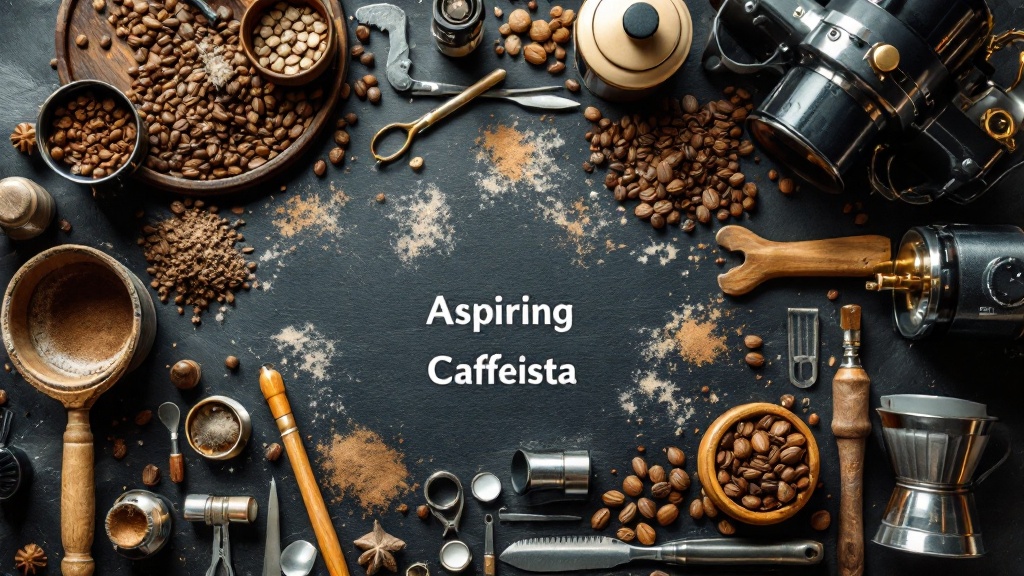
Creating exceptional espresso requires the right tools and a honed skillset. A quality espresso machine, whether manual, semi-automatic, or super-automatic, forms the foundation of your espresso journey. A burr grinder, preferred for its consistent particle size, is crucial for achieving optimal extraction. A tamper, used to compact the coffee grounds in the portafilter, ensures even water flow and prevents channeling. A scale, for precise dosing of coffee and water, is indispensable for consistency. Finally, for milk-based drinks, a milk frother is essential for creating creamy, textured milk.
Beyond the equipment, mastering the techniques is equally important. Dialing in the grind size, achieving consistent tamping pressure (around 15-20 kg), and understanding the ideal brew time (25-30 seconds for a double shot) are all critical skills. Preheating your portafilter and cup helps maintain the optimal brewing temperature and prevents heat loss during extraction. As a practical tip, aim for a 1:2 coffee-to-water ratio (e.g., 18-20g of coffee to 36-40g of water) as a starting point and adjust based on your taste preferences. Developing these skills takes practice and patience, but the reward of a perfectly pulled shot is well worth the effort.
Espresso Extraction Optimization
Optimal espresso extraction hinges on precise control of several key variables. The most critical is grind size distribution, achieved through a burr grinder. Uniform particle size minimizes channeling, a phenomenon where water preferentially flows through less-resistant pathways, resulting in uneven extraction and a sour, under-extracted shot or a bitter, over-extracted one. High-quality burr grinders, such as the Mahlkönig EK43 or Baratza Sette 270Wi, offer superior particle size consistency compared to blade grinders. Adjusting the grind size requires iterative testing, evaluating the shot’s characteristics – its taste, crema quality, and extraction time – to achieve the “sweet spot”. A coarser grind will result in a faster extraction time and potentially sour taste, whereas a finer grind will lead to a longer extraction time and a bitter, astringent shot. The goal is to find the grind setting that produces a balanced extraction time of 25-30 seconds for a double shot, yielding a rich, nuanced flavor profile with a deep, reddish-brown crema.
- Dose consistency is crucial; use a scale to ensure consistent coffee grounds per shot.
- Water temperature significantly impacts extraction; aim for 195-205°F (90-96°C).
- Tamping pressure should be even and consistent, around 30 lbs of force.
- Observe the espresso’s color and texture; a rich, reddish-brown crema indicates optimal extraction.
- Experiment with different coffee beans; bean origin and roast level influence grind size needs.
- Clean your grinder regularly to maintain consistent particle size distribution.
Mastering the Art of Espresso Extraction
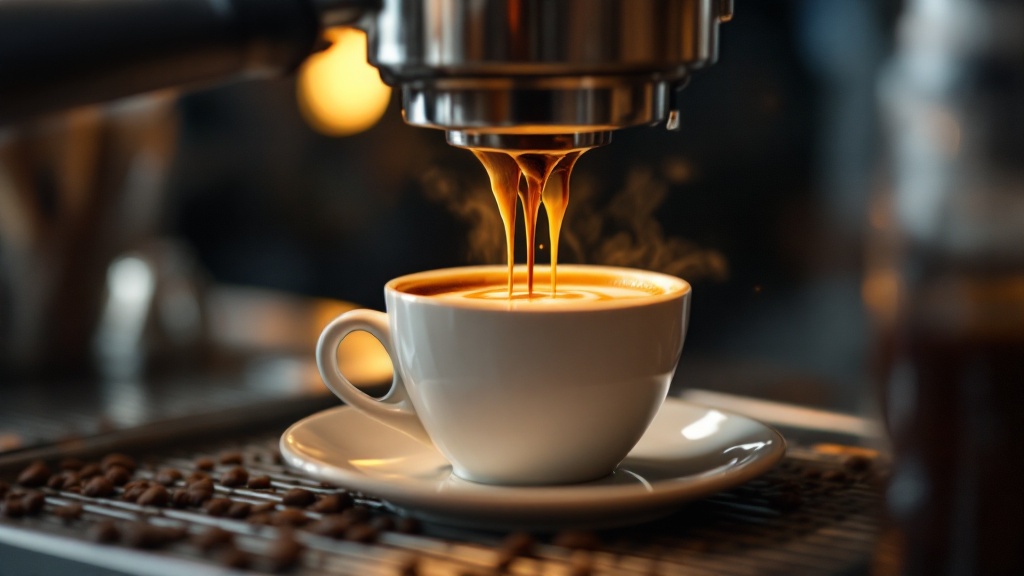
Achieving espresso perfection lies in understanding and controlling the extraction process. The grind size is a critical variable: too fine, and the espresso will be bitter and over-extracted; too coarse, and it will be sour and under-extracted. Aim for a grind size that resembles table salt. Dosing the correct amount of coffee, typically 18-20 grams for a double shot, is crucial for achieving the desired concentration. Tamping evenly with consistent pressure prevents channeling, where water takes the path of least resistance through the coffee puck, resulting in uneven extraction.
The brew time, ideally 25-30 seconds for a double shot, is another key indicator of proper extraction. Water temperature should be between 90-96°C for optimal flavor development. Preheating your equipment, including the portafilter and cup, ensures that the brewing temperature remains consistent throughout the process. Barista champion Matt Perger recommends using a distribution tool, like a WDT (Weiss Distribution Technique) tool, to break up clumps and ensure an even distribution of coffee grounds before tamping. These finer details can significantly impact the quality of your espresso.
Espresso Extraction Yield
Extraction yield, defined as the percentage of soluble solids extracted from the coffee grounds during brewing, is a critical parameter for espresso quality. Optimal extraction yield typically falls within the range of 18-22%, although this can vary slightly depending on the specific coffee bean’s characteristics and the desired flavor profile. Extraction yield significantly impacts the perceived taste of the espresso; under-extraction results in sourness and a lack of body, while over-extraction leads to bitterness and astringency. Precise measurement of extraction yield requires specialized equipment such as a refractometer, which measures the soluble solids concentration in the extracted espresso. A refractometer reading provides a quantifiable measure to optimize the brewing process.
- Target yield often varies by bean type; lighter roasts may ideal at the lower end (18-20%), while darker roasts might reach the higher end (20-22%).
- Factors beyond the yield percentage influence taste; grind size, tamping pressure, and water temperature all play a crucial role.
- Under-extracted espresso typically lacks body and sweetness, presenting as sour and thin.
- Over-extracted espresso is characterized by bitterness, astringency, and a burnt or rubbery flavor.
- Beyond refractometers, TDS (Total Dissolved Solids) meters also measure extraction yield, offering another method for quantification.
- Tracking extraction yield over time helps identify trends and refine your brewing techniques for consistency.
Troubleshooting Common Espresso Challenges
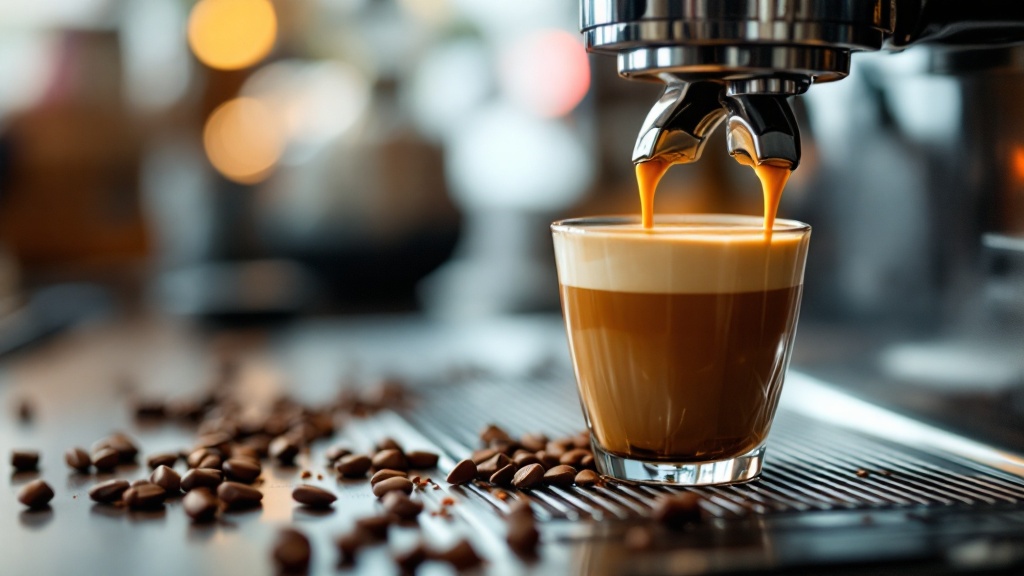
Even seasoned baristas encounter challenges in their pursuit of the perfect espresso. A bitter taste often indicates over-extraction, which can be remedied by grinding coarser or reducing the brew time. Sourness, on the other hand, points to under-extraction and can be addressed by grinding finer or increasing the brew time. Channeling, characterized by uneven extraction and a watery shot, is often caused by uneven tamping or clumping in the coffee grounds. Using a distribution tool can help eliminate these issues. A weak crema might suggest stale beans or an incorrect grind size. Regular machine maintenance, including descaling and backflushing, is essential for preventing mineral buildup and ensuring optimal performance.
Maintaining a log of your espresso parameters – grind size, dose, tamp pressure, and brew time – can be invaluable for troubleshooting and achieving consistent results. This log allows you to track your progress, identify patterns, and systematically adjust variables to refine your technique. By understanding the relationship between these variables and the final cup, you can diagnose and address issues effectively, moving closer to espresso mastery with each brew.
Espresso Extraction Yield Optimization
Achieving optimal espresso extraction yield is crucial for producing a balanced and flavorful shot. Extraction yield, defined as the percentage of soluble solids extracted from the coffee grounds, is directly influenced by several key parameters. Grind size, a critical variable, dictates the surface area available for water contact. A finer grind presents a larger surface area, leading to faster extraction and potentially over-extraction if the brew time is not adjusted accordingly. Conversely, a coarser grind reduces surface area, resulting in slower extraction and potentially under-extraction. The optimal grind size depends on various factors, including bean origin, roast level, and desired extraction time. Experimentation and careful observation are essential to determine the ideal grind size for specific beans and brewing parameters.
- Target extraction yield typically ranges from 18-22%, though ideal percentages vary based on coffee characteristics.
- Water temperature significantly impacts extraction; hotter water extracts more solids faster, potentially leading to bitterness.
- Brew time is interconnected with grind size; finer grinds require shorter brew times to avoid over-extraction.
- Pressure profiling (varying pump pressure during extraction) can fine-tune the extraction process for enhanced flavor.
- Using a scale to measure both coffee dose and espresso yield allows for precise adjustments and consistent results.
- Coffee bean age and storage conditions influence extraction yield; fresher beans generally yield better results.
The Allure and Considerations of Espresso
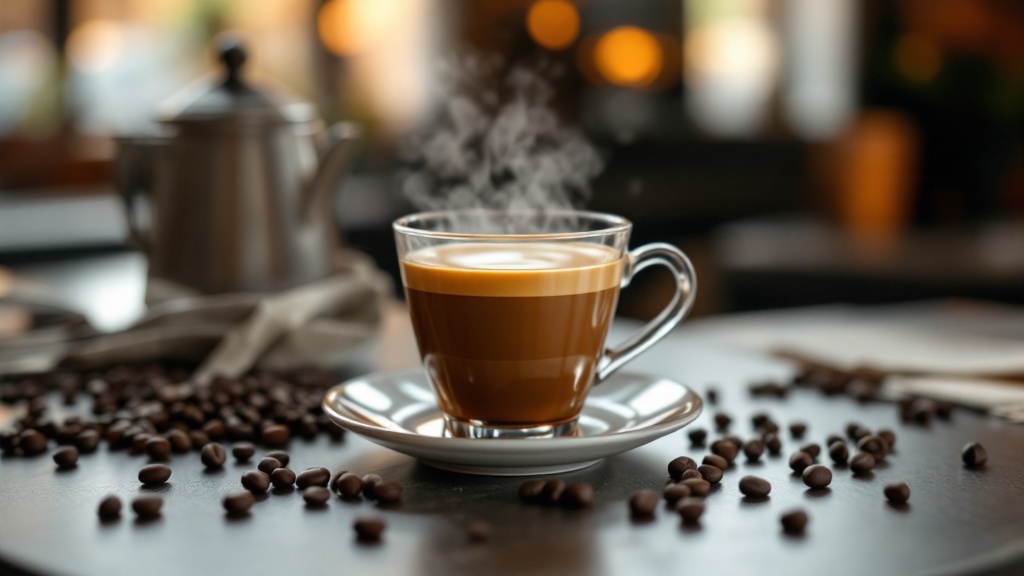
Espresso’s allure lies in its rich, concentrated flavor and its versatility as the base for a wide array of coffee drinks, from lattes and cappuccinos to macchiatos and Americanos. The relatively quick preparation time, once the technique is mastered, makes it an ideal choice for a quick caffeine fix or a more elaborate coffee ritual. But here’s the thing, venturing into the world of espresso requires an investment in equipment, which can range from relatively affordable to quite expensive. There’s also a steep learning curve involved, requiring patience, practice, and a willingness to experiment.
On top of that, the quality of the beans significantly impacts the final product. Freshly roasted, high-quality beans are essential for achieving the best possible flavor. As James Hoffmann notes, espresso is as much about the process as the result. It’s about the meticulous attention to detail, the understanding of variables, and the constant striving for improvement. The journey of mastering espresso is a rewarding one, offering a deep appreciation for the craft and science behind this beloved beverage.
Espresso Extraction Optimization
Achieving optimal espresso extraction hinges on precise control of several key parameters: grind size, dose, tamp pressure, and brew temperature. Grind size directly impacts the surface area of the coffee grounds exposed to the water. Too coarse a grind results in under-extraction, yielding a sour, weak shot lacking body. Conversely, a grind that’s too fine leads to over-extraction, producing a bitter, astringent espresso with burnt notes. The ideal grind size is dependent on the specific coffee bean, the espresso machine’s water pressure, and the desired extraction time (typically aiming for 25-30 seconds). A burr grinder, rather than a blade grinder, is essential for achieving consistent particle size distribution, critical for repeatable extractions.
- Water temperature significantly impacts extraction; aim for 195-205°F (90-96°C) for optimal flavor development.
- Dose consistency is crucial; using a scale ensures accurate measurements for repeatable results. A standard double shot uses approximately 18-21 grams of coffee.
- Proper tamping achieves even pressure distribution, preventing channeling and ensuring uniform water flow through the puck.
- Extraction time is a key indicator of quality; a longer extraction time (beyond 30 seconds) often indicates a grind that’s too fine.
- Freshly roasted beans are essential for optimal flavor and extraction; use beans within 2-3 weeks of roasting for best results.
Expert Recommendations for Espresso Excellence
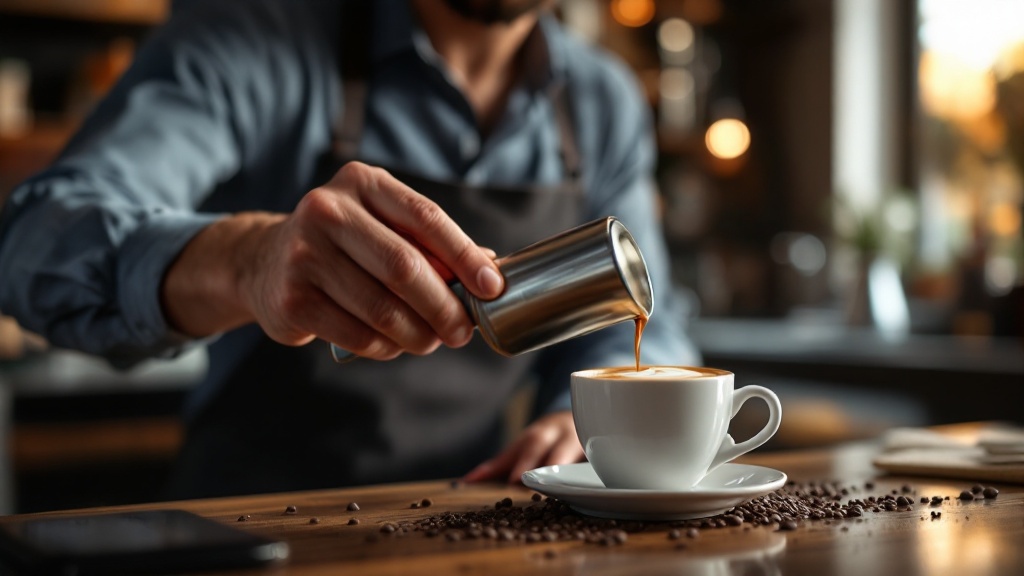
To elevate your espresso game, heed the advice of seasoned experts. Prioritize freshly roasted beans, ideally within 2-4 weeks of the roast date, as the flavor compounds degrade over time. Grind your beans immediately before brewing to preserve their aromatic oils and volatile compounds. Use filtered water to avoid mineral buildup in your machine and ensure a clean, unadulterated flavor profile. Don’t be afraid to experiment with different variables – grind size, dose, temperature, and pressure – to discover your personal preferences.
Consider investing in further education, whether through a barista course, online tutorials, or books like Scott Rao’s *Everything but Espresso*. These resources provide invaluable insights into the science and art of espresso, helping you refine your technique and troubleshoot common challenges. The world of espresso is constantly evolving, with new techniques and technologies emerging. Staying curious and continuously seeking knowledge is key to unlocking the full potential of this captivating beverage.
Espresso Extraction Optimization
Achieving optimal espresso extraction hinges on precise control of several key variables. The most critical parameter is the grind size distribution. A mono-modal distribution, achieved through burr grinders with minimal particle size variation, ensures uniform water flow through the puck. Uneven particle sizes lead to channeling, where water finds paths of least resistance, resulting in uneven extraction and a sour or bitter taste. A common issue is using a grinder’s default setting; calibration is essential for optimal performance. For example, a Baratza Sette 270 should be calibrated to a specific grind size using a precision scale and timer, aiming for an extraction time between 25-30 seconds, which is considered a standard for a double shot. Grind size adjustments should be made incrementally (e.g., 0.1 steps) to observe their impact on extraction yield and flavor.
- Water temperature significantly impacts extraction; aim for 195-205°F (90-96°C).
- Dose and tamp pressure also influence extraction; consistency is key for repeatable results.
- Observe the espresso’s color and crema; dark brown with a rich crema indicates proper extraction.
- Use a scale to measure both coffee dose and espresso yield for precise extraction ratio tracking (e.g., 1:2 ratio).
- Consider using a bottomless portafilter to visually assess the puck’s dispersion and identify channeling.
- Regular grinder maintenance (burr cleaning) is vital for maintaining consistent grind size.
Beyond Espresso: Exploring Related Coffee Realms
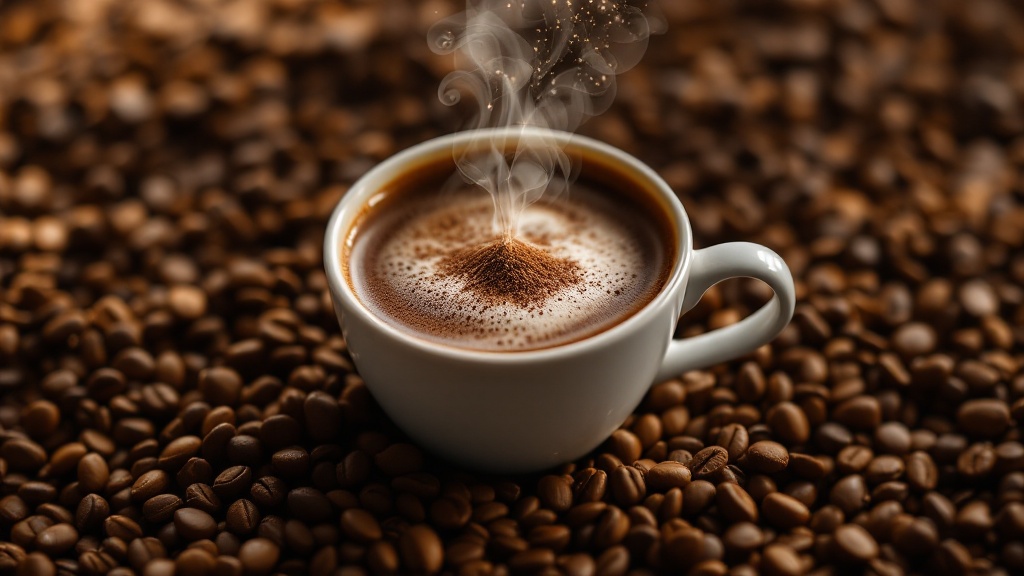
The world of espresso opens doors to a wider universe of coffee exploration. Latte art, the art of creating intricate designs in milk-based espresso drinks, adds a visual dimension to your coffee experience. Delving into coffee roasting allows you to understand how different roast profiles influence the flavor of your espresso. Exploring other brewing methods, such as pour-over or French press, provides a broader perspective on coffee preparation and flavor extraction.
Consider the ethical and environmental implications of your coffee consumption by exploring sustainably sourced beans and supporting fair trade practices. For those with entrepreneurial aspirations, the world of café management offers exciting opportunities to share your passion for espresso with the world. By venturing beyond the basics, you can deepen your appreciation for coffee and discover new avenues for enjoyment and exploration.
Espresso Extraction Optimization
Achieving optimal espresso extraction involves precise control over several key variables. The most crucial parameter is the grind size, directly influencing the surface area of the coffee grounds exposed to the water. Too coarse a grind results in under-extraction, yielding a weak, sour, and underdeveloped espresso with insufficient body. Conversely, too fine a grind leads to over-extraction, producing a bitter, astringent, and burnt-tasting espresso. The ideal grind size depends on the specific coffee bean, its roast level, and the espresso machine’s pressure capabilities. Many professional baristas utilize precision grinders with micron adjustments to achieve optimal grind consistency.
- Water temperature significantly impacts extraction; ideal range is 195-205°F (90-96°C).
- Extraction time should ideally be between 25-30 seconds for a balanced shot.
- Coffee bean origin and roast level directly affect optimal grind size; darker roasts often require coarser grinds.
- Dose (amount of coffee grounds) and tamp pressure also influence extraction; consistency is key.
- Using a scale for both coffee dose and espresso yield allows for precise measurements and repeatable results.
Conclusion: Embracing the Espresso Journey
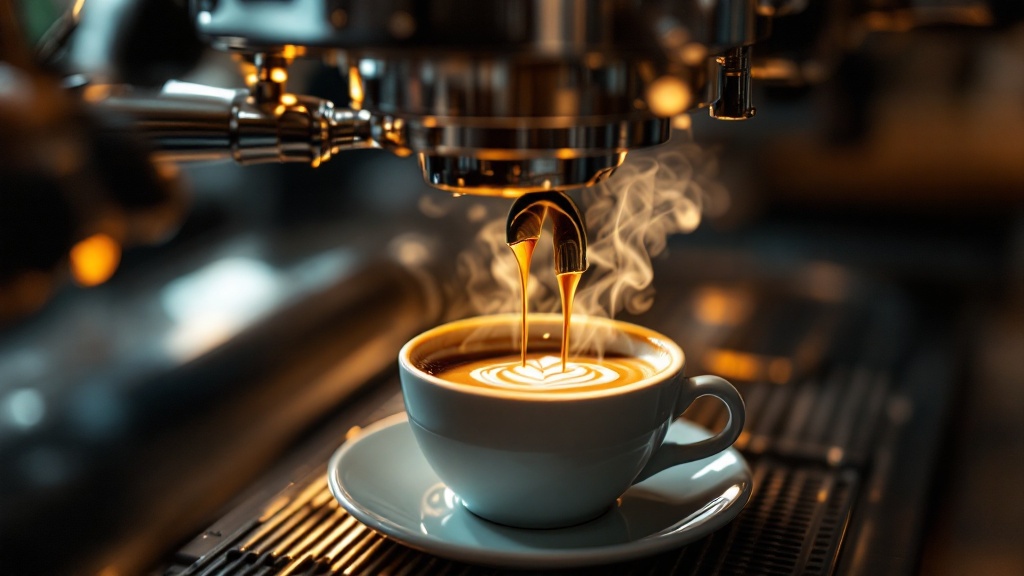
Espresso is a complex and rewarding beverage, demanding precision, practice, and a dedication to quality. By mastering the fundamental techniques and understanding the science behind extraction, you can unlock the potential to create consistently excellent espresso. Experts like James Hoffmann and Scott Rao offer invaluable guidance in refining your process and overcoming challenges. Whether enjoyed as a quick pick-me-up or savored as a meticulously crafted ritual, espresso provides a rich and versatile coffee experience, inviting you on a journey of discovery and mastery.
Espresso Extraction Yield
Achieving optimal espresso extraction yield is paramount for producing a balanced and flavorful shot. Extraction yield, typically expressed as a percentage, represents the ratio of extracted solids to the total mass of coffee grounds used. A standard range often cited is between 18% and 22%, although this can vary based on factors such as bean origin, roast level, grind size, and desired flavor profile. Extraction yields below 18% result in an under-extracted espresso, characterized by sourness, astringency, and a lack of body. Conversely, yields above 22% often produce over-extracted espresso, exhibiting bitterness, burnt notes, and a harsh mouthfeel. Accurate measurement of extraction yield requires the use of a refractometer, which measures the dissolved solids in the brewed espresso. This allows for precise adjustments to the grind size, dose, and brew time to achieve the desired yield.
- Grind size significantly impacts extraction; finer grinds increase yield, coarser grinds decrease it.
- Water temperature plays a crucial role; higher temperatures generally increase extraction yield.
- Coffee bean characteristics (density, origin) influence the optimal extraction range.
- A properly calibrated espresso machine is essential for consistent extraction.
- Taste is subjective; some baristas prefer yields outside the 18-22% range to achieve specific flavor profiles.
- Beyond the refractometer, techniques like TDS (Total Dissolved Solids) measurement offer further precision.
Unleash Your Inner Barista
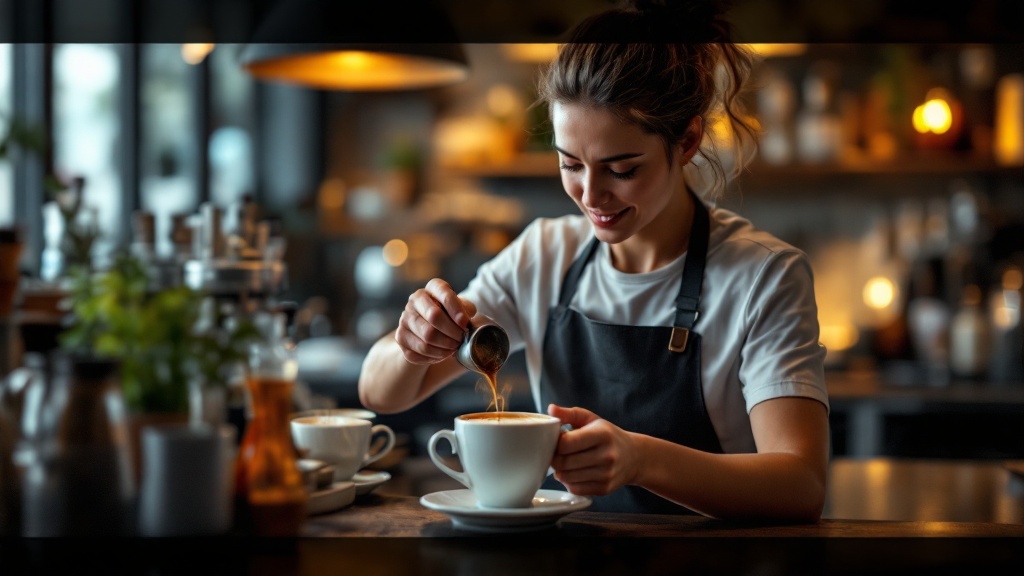
From the fundamental principles of pressure and extraction to the nuances of grind size and bean selection, the journey to espresso mastery is one of continuous discovery and refinement. Understanding the interplay of these elements empowers you not just to replicate your favorite café creations, but to surpass them. Whether you’re a seasoned coffee aficionado or just beginning to explore the world beyond instant coffee, the ability to craft a truly exceptional espresso is within your reach. Remember the importance of quality ingredients – freshly roasted beans, filtered water, and a well-maintained machine – as these are the cornerstones of a remarkable espresso experience. And don’t forget the subtle art of tasting and adjusting; each cup is an opportunity to learn and refine your technique.
This journey is more than just about making a delicious beverage; it’s about cultivating a deeper appreciation for the artistry and science behind every shot. It’s about understanding the origins of your beans, experimenting with different brewing parameters, and ultimately, discovering the flavors that resonate with your palate. The world of espresso is rich with possibilities, waiting to be unlocked with every pull of the lever, every hiss of the steam wand, every swirl of the demitasse. So, embrace the process, experiment fearlessly, and prepare to be captivated by the endless potential held within those finely-ground beans.
Now, go forth, armed with this newfound knowledge, and craft your perfect cup. Share your espresso triumphs, experiment with new techniques, and never stop exploring the fascinating world that lies within each bean. Your journey to espresso mastery starts now.
Espresso Extraction Optimization
Achieving optimal espresso extraction involves a precise interplay of factors, primarily grind size, dose, and brew pressure. Grind size directly influences the surface area of the coffee grounds exposed to the water. A finer grind provides increased surface area, leading to over-extraction, characterized by bitter and astringent flavors, and potentially channeling. Conversely, a coarser grind results in under-extraction, producing sour and underdeveloped flavors, often accompanied by weak body. The ideal grind size is dependent upon numerous factors, including bean origin, roast level, and desired flavor profile. Achieving consistency is crucial; even minor variations in grind size across the coffee bed can lead to uneven extraction and inconsistencies in the final product. For example, a Baratza Sette 270 grinder, known for its precision and consistency, can minimize grind size variability.
“`- Water temperature significantly impacts extraction; aim for 195-205°F (90-96°C) for optimal results.
- Extraction time should ideally fall within 25-30 seconds; adjust grind size to achieve this target.
- Proper tamping pressure (30 lbs) ensures even water distribution across the coffee puck, preventing channeling.
- Bean age and storage methods affect extraction; use fresh, properly stored beans for best results.
- Dialing in your espresso involves iterative adjustments to grind size, dose, and pressure to achieve your preferred flavor profile.
| Key Aspect | Grind Size | Water Temp | Extraction Time |
|---|---|---|---|
| Optimal Extraction | Fine to Coarse (adjust for flavor) | 195-205°F (90-96°C) | 25-30 seconds |

